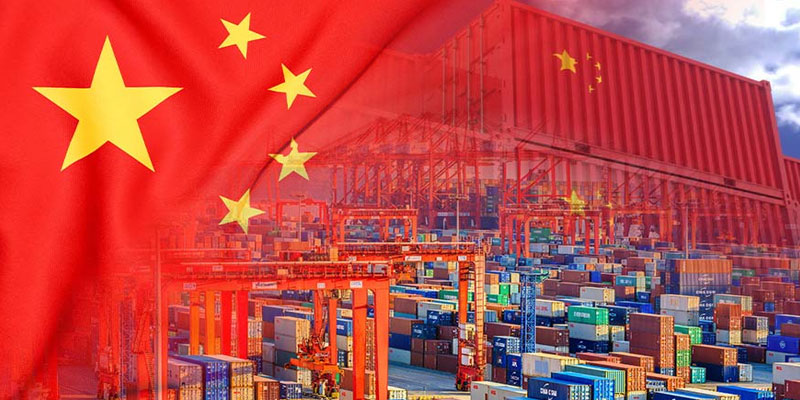May Exports Hit Three-Month Low as U.S. Tariffs Tighten the Grip
China’s export growth slowed sharply in May, hitting a three-month low as U.S. tariffs slammed trade flows, exposing deep vulnerabilities in the world’s second-largest economy. According to customs data released Monday, exports rose 4.8% year-on-year, down from 8.1% in April and below the 5% forecasted by analysts. Meanwhile, imports fell 3.4%, a sharper decline than expected, indicating both external strain and domestic fragility.
Even as Beijing and Washington suspended most tariffs for 90 days beginning in April, the damage was already in motion, with factory-gate deflation worsening and exporters caught in a web of heavy customs scrutiny and regulatory bottlenecks. Now, the pressure is mounting on Chinese policymakers who are trying to revive a sluggish post-COVID recovery.
A Tariff War That Reshaped Global Trade
The U.S.-China tariff war, initiated under the Trump administration has redrawn the landscape of global trade. Imposed to address long-standing grievances over market access, IP theft, and trade imbalances, the tariffs have instead amplified uncertainty, disrupted supply chains, and forced Chinese exporters to pivot rapidly.
In May alone, Chinese exports to the U.S. plummeted 34.5%, compared to a 21% drop the previous month. U.S. imports from China also fell 18.1%. Despite temporary tariff relaxations, trust between the two giants remains fractured. With new flashpoints emerging—ranging from China’s control over rare earths to its stance on Taiwan—negotiations continue, but progress is fragile.
Economists point out that some of the export slowdown is due to a pull-forward effect earlier this year, where firms rushed shipments ahead of tariff deadlines. But deep structural concerns remain, especially as U.S. and EU manufacturers seek alternative suppliers in Southeast Asia, Mexico, and India.
Deflationary Pressures Signal Domestic Weakness
Beyond trade, China’s internal challenges are becoming more pronounced. May saw the Producer Price Index (PPI) fall 3.3%, the steepest decline in nearly two years, while Consumer Price Index (CPI) dropped 0.1%, reflecting a deflationary spiral that is becoming harder to reverse.
This persistent price decline reflects excess industrial capacity, stagnant demand, and weak household confidence. Retail sales are sluggish, real estate prices remain flat, and job insecurity looms large. Even major brands are reacting—Starbucks cut drink prices in China as consumers tighten their belts.
Despite recent interest rate cuts and a 500-billion-yuan loan package targeting elderly care and consumption, analysts like Zichun Huang of Capital Economics caution that “persistent overcapacity will keep China in deflation both this year and next.”
Beijing’s Stimulus Falls Short Against Global Headwinds
Faced with intensifying external pressure and internal slowdown, Beijing has rolled out modest stimulus measures, but these appear insufficient in the face of global forces. Industrial output is underperforming, and while tech and electric vehicle exports show promise, even electric machinery shipments slowed last month due to tighter export controls and global saturation.
China’s commodity imports—oil, coal, iron ore—also fell in May, a clear signal that factories are operating below capacity. Analysts argue that without robust consumer demand or a resolution to the trade standoff, these stimulus tools may only offer short-term relief.
What’s Next for the World’s Second-Largest Economy?
The combined weight of falling exports, deepening deflation, and muted domestic demand is reshaping China’s growth trajectory. For an economy that has long relied on its manufacturing muscle and export prowess, the current headwinds raise critical questions about its long-term resilience and adaptability.
The outcome of ongoing U.S.-China trade talks, currently resuming in London, will be closely watched. But even a diplomatic thaw may not be enough to undo the structural damage done by years of tariff warfare and geopolitical decoupling.
Final Word
China’s economic engine is sputtering, caught between external confrontation and internal stagnation. While its global influence remains formidable, the path to sustained recovery now requires more than stimulus—it demands strategic reinvention, both at home and abroad. As trade tensions persist and deflation takes root, the dragon may need to rethink how it roars in a rapidly shifting global order.
(With agency inputs)





















